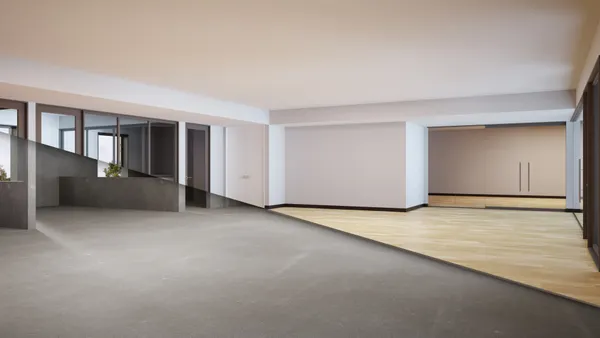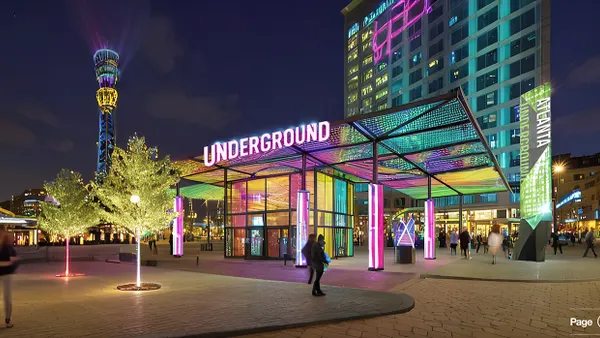Dive Brief:
- The U.S. Green Building Council (USGBC), alongside the Green Business Certification Inc. (GBCI), released an expanded suite of resources and resilience tools to support green building initiatives, helping cities and businesses mitigate the economic effects of COVID-19 and the worsening impacts of climate change.
- USGBC and GBCI’s available resources include the "LEED for cities and communities program" to help enhance building resilience; a roadmap for operating and designing energy systems in the face of potential disasters; and educational materials about resiliency within the green building industry, among other tools.
- USGBC also partnered with Coastal Risk Consulting on a new RiskFootprint tool, which enables building owners, architects and engineers to assess a building's vulnerability to climate risks such as flooding or earthquakes.
Dive Insight:
More than 16 million people globally and 1.2 million U.S. residents were displaced due to weather-related events in 2018. Today, the effects of climate change in the U.S. are being felt perhaps most urgently on the West Coast, as wildfires have destroyed more than one million acres and killed at least 33 people, CNBC reports.
The building sector is one of the primary areas where cities can tackle climate change and its costly effects.
"We know people, especially those in our most vulnerable communities, are already experiencing the costs of a changing climate and the resilience of the people in these structures is a critical factor," Mahesh Ramanujam, President and CEO of USGBC and GBCI, said in a statement. "Resilient design, construction and operations verified through green building and infrastructure certifications can help reduce risk and vulnerability."
And despite the financial challenges that many cities are currently facing due to the pandemic, policy work among cities to meet their climate goals in the building sector is largely still continuing, according to USGBC Senior Policy Counsel Elizabeth Beardsley.
St. Louis, for instance, recently became the first Midwest city to pass a Building Energy Performance Standard to help eliminate greenhouse gas (GHG) emissions by 2050. And the City of San Jose, which plans to reduce its emissions 80% by 2050, kick-started its Better Buildings program in March to support the reduction of GHG emissions for 19 city buildings.
To support resiliency within the building sector, Beardsley said a range of solutions can be used, such as incentives. Much of the work doesn't necessarily have an associated net cost since energy-related GHG emission reductions typically pay for themselves in savings, she said.
In fact, the National Institute of Building Sciences recently found that for every $1 invested in disaster mitigation, society is saved $6. USGBC Research Project Manager Sean McMahon echoed those findings, saying there are now more building owners and investors potentially seeing resilience as an investment opportunity rather than an upfront expense.










